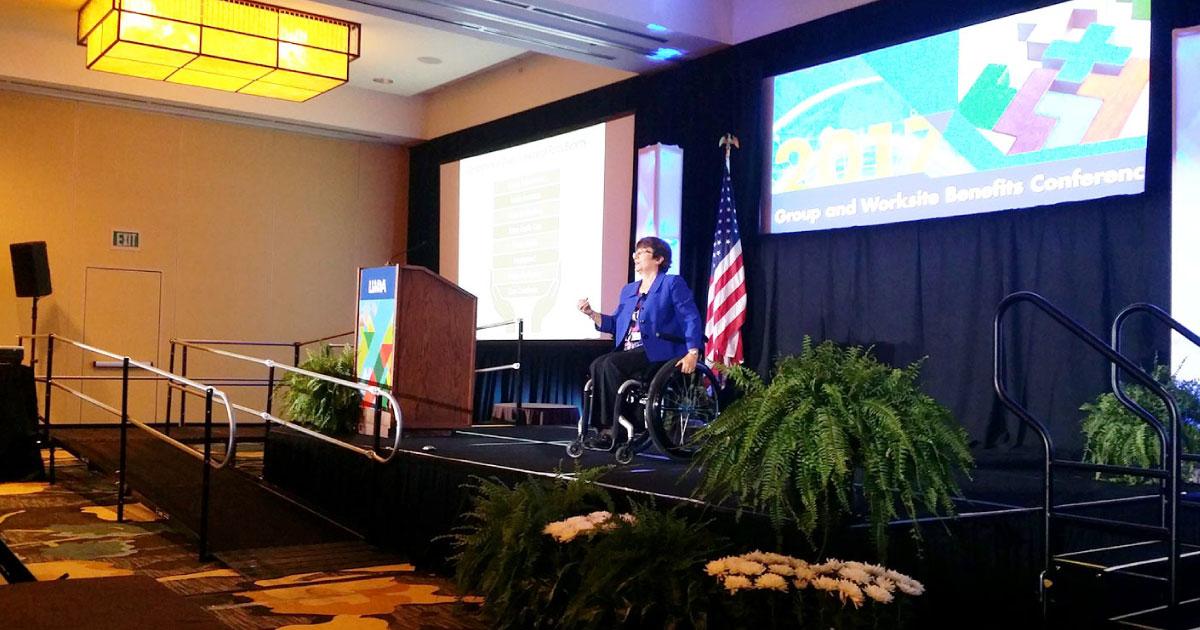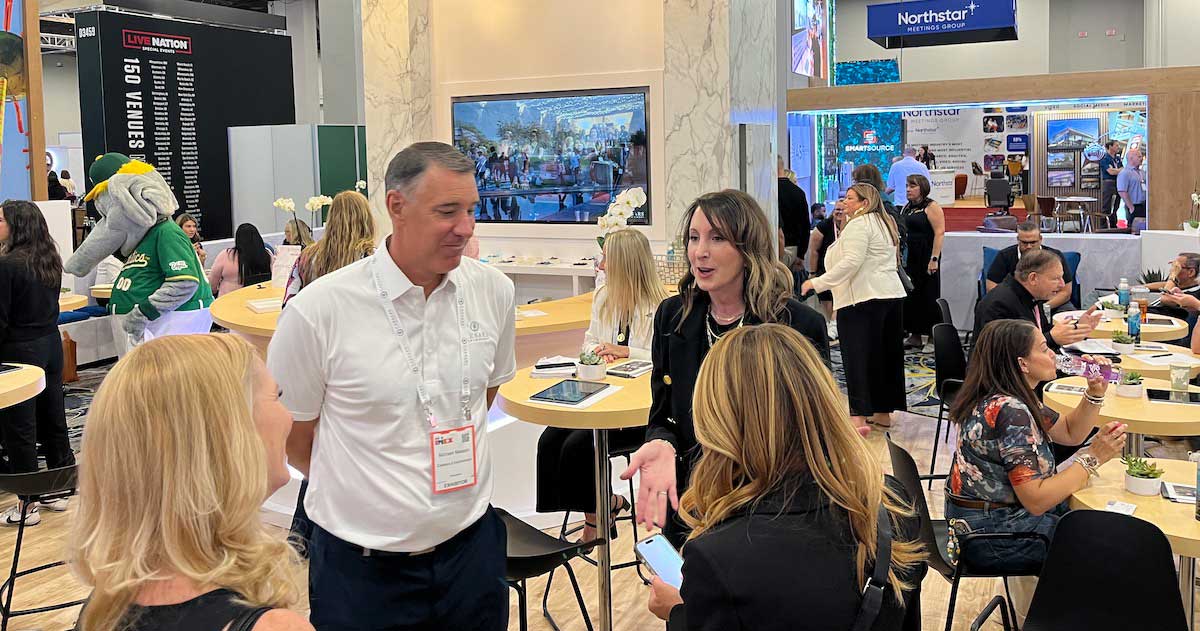Meeting professionals are responsible to arrange for a stage and a ramp or a vertical platform lift to the stage when they are needed. The stage enables speakers who use wheelchairs to be seen by the audience. A ramp or vertical platform lift enables speakers who use mobility devices like wheelchairs, scooters, and canes or those who are unable to climb steps to be on the stage.
As a speaker who uses a wheelchair, I guide my clients on what stage size is best for me. I prefer a stage area that is 12 feet by 24 feet so I can roll around when I speak. The ramp length that will be needed is based on the height of the stage. The ADA ramp requirements are specific. The formula is easy.
For every foot of height of the stage, there needs to be 12 feet of ramp. The maximum slope of a ramp is 1:12. The minimum clear width of the ramp should be 36 inches.
For every foot of height of the stage, there needs to be 12 feet of ramp. The maximum slope of a ramp is 1:12. The minimum clear width of the ramp should be 36 inches. Ramps shall have curbs or edges at least 2 inches high to prevent people from falling off. If a ramp run has a rise greater than 6 inches or a horizontal projection greater than 72 inches then it shall have handrails on both sides.
Should the room not accommodate the length of the ramp that is required, a vertical platform lift will need to be installed next to the stage. Placement of the vertical platform lift or ramp is important for access to the stage. Be aware that the view of the audience should not be impacted when the ramp is in place. It may be necessary to move audience chairs and the projection screens to provide for a clear view.
The ADA’s position on having a ramp or vertical platform lift for a stage is that the facility that is holding the event such as the hotel, conference or convention center is responsible for providing them. The stage is a barrier and a ramp or vertical platform lift is a means of removing that barrier for someone who needs an accessible route to the stage. Since the facility is primarily responsible they should not be charging their client to use the ramp or vertical platform lift. The client could cost-share with the facility if this is negotiated in the contract.
There are national and local companies that rent ramps. It is advisable for meeting professionals to clarify if the facility has its own ADA compliant ramp that is of the appropriate length for the stage height, and any associated costs to use it. I have found that when a hotel did not have a ramp on site they could borrow one from a neighboring hotel.
Here is an ADA resource that meeting professionals can use as they plan meetings and events to better accommodate people with disabilities. "Accessible Information Exchange: Meeting on a Level Playing Field." It contains information on arranging the meeting space; communicating with your participants who have disabilities; providing auxiliary aids and services; evaluating the accessibility of a meeting site, and contact information to the ADA Regional Centers. The ADA Information Line is staffed with experts who can answer your questions and direct you to resources, 800-514-0301. The main website for the ADA is www.ada.gov Here you can search for detailed requirements and illustrations for ramps.







